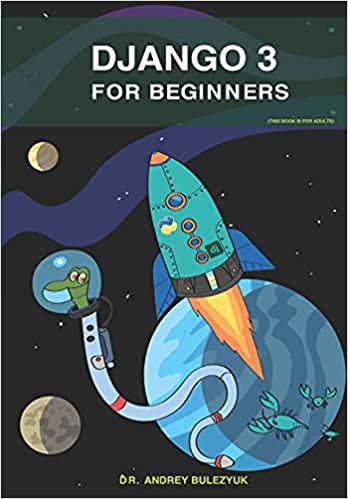- 1. Laying the Foundation: Understanding the Basics of ChatGPT and Its Applications
- 2. Data Preparation: Curating High-Quality Datasets for Your GPT Project
- 3. Model Training and Fine-Tuning: Optimizing ChatGPT for Your Specific Use Case
- 4. Deployment and Integration: Seamlessly Incorporating ChatGPT into Your IT Infrastructure
1. Laying the Foundation: Understanding the Basics of ChatGPT and Its Applications
Before diving into the world of ChatGPT, it is crucial to understand the basics of this powerful language model. ChatGPT, or Chatbot Generative Pre-trained Transformer, is an advanced AI model developed by OpenAI. It is designed to generate human-like text based on the input it receives. By leveraging the power of deep learning and natural language processing, ChatGPT can understand context, generate relevant responses, and even engage in meaningful conversations with users.
One of the key strengths of ChatGPT is its versatility. It can be applied to a wide range of applications, including but not limited to customer support, content generation, virtual assistants, and even gaming. By understanding the potential use cases for ChatGPT, you can better tailor your GPT project to meet your specific needs and requirements.
As you embark on your ChatGPT project, it is essential to familiarize yourself with the underlying technology. GPT models are pre-trained on vast amounts of text data, allowing them to generate contextually relevant responses. However, to make the most of ChatGPT, you will need to fine-tune the model on your own dataset, ensuring that it aligns with your project’s goals and objectives.
Another critical aspect of ChatGPT is its token-based architecture. Tokens are the building blocks of text, and understanding how they work is vital for optimizing your GPT project. Each input and output in ChatGPT is represented as a sequence of tokens, and the model’s capacity is limited by the total number of tokens it can process. By managing tokens effectively, you can ensure that your ChatGPT model operates efficiently and delivers the desired results.
Finally, it is important to consider the ethical implications of using ChatGPT in your project. As an AI language model, ChatGPT has the potential to generate biased or harmful content. By being aware of these risks and implementing safeguards, you can create a responsible and effective GPT project that benefits both your organization and its users.
2. Data Preparation: Curating High-Quality Datasets for Your GPT Project
One of the most critical steps in creating a successful ChatGPT project is data preparation. A high-quality dataset is essential for training and fine-tuning your model, ensuring that it generates accurate and contextually relevant responses. To curate a suitable dataset, you should focus on gathering diverse and representative text samples that align with your project’s goals and objectives. This may involve collecting data from various sources, such as customer support transcripts, online forums, or even social media platforms.
Once you have collected your raw data, it is important to preprocess and clean it to ensure optimal performance. This may involve several steps, including:
- Removing irrelevant or sensitive information
- Correcting spelling and grammar errors
- Standardizing text formatting and capitalization
- Tokenizing the text into individual words or subwords
After preprocessing your data, you should split it into training, validation, and test sets. The training set is used to fine-tune the ChatGPT model, while the validation set helps you monitor the model’s performance and prevent overfitting. The test set is reserved for evaluating the final model’s performance. A common practice is to use a 70-15-15 or 80-10-10 split for the training, validation, and test sets, respectively.
When preparing your dataset, it is crucial to consider the token limit of your ChatGPT model. As mentioned earlier, tokens are the building blocks of text, and each model has a maximum token capacity. For example, if your model has a token limit of 4096, you should ensure that your input sequences, including any prompts and responses, do not exceed this limit. Truncating or splitting longer sequences may be necessary to adhere to the token constraints.
Lastly, it is essential to maintain a balance between the different classes or categories in your dataset. This ensures that your ChatGPT model learns to generate diverse and unbiased responses. You can achieve this by carefully curating your dataset and monitoring the distribution of classes during the data preparation process.
3. Model Training and Fine-Tuning: Optimizing ChatGPT for Your Specific Use Case
Once you have prepared your dataset, the next step is to train and fine-tune your ChatGPT model. Fine-tuning is the process of adapting the pre-trained GPT model to your specific use case by training it on your curated dataset. This allows the model to learn the nuances and context of your data, resulting in more accurate and relevant responses. Fine-tuning typically involves adjusting the model’s weights and biases using gradient descent optimization algorithms, such as Adam or RMSprop.
To fine-tune your ChatGPT model effectively, you should consider several hyperparameters that can impact the model’s performance. Some of the key hyperparameters include learning rate, batch size, and the number of training epochs. The learning rate determines the step size taken during gradient descent optimization, while the batch size refers to the number of training samples used in each update. The number of epochs represents the number of times the model iterates over the entire training dataset. Selecting the right combination of hyperparameters is crucial for achieving optimal performance and avoiding issues like overfitting or underfitting.
During the fine-tuning process, it is essential to monitor the model’s performance on the validation set. This helps you track the model’s progress and identify any potential issues, such as overfitting, which occurs when the model performs well on the training data but poorly on unseen data. To prevent overfitting, you can employ techniques like early stopping, where training is halted when the model’s performance on the validation set starts to degrade.
Another important aspect of model training and fine-tuning is the choice of loss function. The loss function quantifies the difference between the model’s predictions and the actual target values, guiding the optimization process. For ChatGPT, a common choice is the cross-entropy loss, which measures the dissimilarity between the predicted probability distribution and the true distribution of tokens. Minimizing the cross-entropy loss helps the model generate more accurate and coherent text.
Once you have fine-tuned your ChatGPT model, it is crucial to evaluate its performance on the test set. This provides an unbiased assessment of the model’s ability to generate accurate and contextually relevant responses. You can use various evaluation metrics, such as perplexity, BLEU score, or ROUGE score, to quantify the model’s performance. By analyzing these metrics, you can identify areas for improvement and iterate on your model to achieve better results.
4. Deployment and Integration: Seamlessly Incorporating ChatGPT into Your IT Infrastructure
After training and fine-tuning your ChatGPT model, the next step is to deploy and integrate it into your IT infrastructure. Deployment involves making your model accessible to users or other systems, typically through an API (Application Programming Interface). By exposing your ChatGPT model via an API, you can easily integrate it with various applications, such as chatbots, virtual assistants, or content generation tools.
There are several deployment options available, depending on your requirements and infrastructure. One popular approach is to use cloud-based platforms, such as AWS, Google Cloud, or Microsoft Azure. These platforms offer managed services for deploying and hosting machine learning models, providing scalability, reliability, and security. Alternatively, you can deploy your ChatGPT model on-premises using your own servers or data centers, giving you more control over the infrastructure and data privacy.
When deploying your ChatGPT model, it is essential to consider factors such as latency, throughput, and resource utilization. Latency refers to the time it takes for the model to generate a response, while throughput measures the number of requests the model can handle simultaneously. Resource utilization refers to the computational resources, such as CPU, GPU, and memory, required to run the model. By optimizing these factors, you can ensure that your ChatGPT model delivers a seamless and responsive user experience.
Integration is the process of incorporating your deployed ChatGPT model into your existing applications or systems. This may involve developing custom code or using pre-built connectors to interface with your model’s API. When integrating ChatGPT, it is crucial to consider factors such as authentication, error handling, and data privacy. Implementing robust security measures, such as API keys or OAuth, can help protect your model from unauthorized access and ensure data confidentiality.
Finally, it is essential to monitor and maintain your deployed ChatGPT model to ensure optimal performance and reliability. This may involve tracking usage metrics, such as the number of requests, response times, and error rates, as well as monitoring the underlying infrastructure for potential issues. By proactively addressing any problems and continuously iterating on your model, you can ensure that your ChatGPT project remains effective and delivers value to your organization and its users.








0 Comments